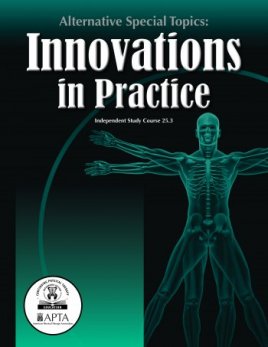
Alternative Special Topics: Innovations in Practice
6-monograph bundle
Contact Hours: 0
| Online Only | |
|---|---|
| APTA Orthopaedic Member | $60 |
| Non-APTA Orthopaedic Member | $75 |
Note: CEUs not offered for this course.
Course Description
This unique series of monographs contains updated and timely topics on areas of practice infl uenced by changes in health care and new technologies. The topics will assist clinicians in staying up-todate to meet the ever-changing demands of practice. Topics include management of shoulder instability, update on treatment of ACL injuries, patellofemoral pain, osteoporosis, management strategies for the obese patient, and musculoskeletal ultrasound.
Course Overview
Course Format: Online
Course Objectives
- Define glenohumeral instability and laxity and describe incidence, prevalence, pathomechanics, and mechanism of injury for each.
- Describe the active and passive restraints about the shoulder and describe classification systems for shoulder instability.
- Determine the role of diagnostic testing.
- Determine and perform an examination using appropriate tests and measures to accurately assess shoulder instability and the associated impairments and functional limitations.
- Identify patients most appropriate for nonoperative management of shoulder instability and implement an evidence-based rehabilitation program.
- Understand anatomy and biomechanics of the anterior cruciate ligament and common mechanisms of injury.
- Describe the evidence governing clinical and imaging tests for diagnosing anterior cruciate ligament tears.
- Understand current surgical procedures for various populations and how they impact rehabilitation and recovery.
- Understand the rationale for anterior cruciate ligament prevention programs.
- Identify predictors of anterior cruciate ligament tears and proper testing for risk assessment as supported by research.
- Discuss the biomechanics and pathomechanics of the patellofemoral region and identify movement patterns that may contribute to patellofemoral pain.
- Discuss physical therapy classification of patients with patellofemoral pain.
- Provide evidence-based review of functional tests for the lower extremity.
- Identify and discuss tests and measures that can be used in the identification of pain generators of the patellofemoral region.
- Review current surgical interventions for treatment of patellofemoral pain.
- List the risk factors associated with osteoporosis and how such risks are measured.
- Recognize the most common risk factors associated with falls in the elderly.
- Identify self-report measures and clinical tests used to ascertain fall risk and strength.
- Discuss strategies that may be used to reduce fall risk in this population.
- Prescribe and adjust an appropriate exercise program for the patient with osteoporosis.
- Discuss the etiology and prevalence of obesity and list disease risks associated with increasing body mass index as supported by research.
- Identify the genetic, cultural, educational, and age-related characteristics that influence the plan of care for the patient with obesity.
- Review evidence related to the association between increasing weight and painful conditions (ie, low back pain, osteoarthritis) and how they decrease quality of life.
- Explain the evidence-based modifications that should be made when treating patients who are obese.
- Understand the imaging principles of musculoskeletal ultrasound.
- Be familiar with basic scanning methods and normal sonographic anatomy.
- Understand the clinical indications for musculoskeletal and therapeutic ultrasound interventions in orthopaedic physical therapy.
- Be familiar with the appearance of select pathologies using ultrasound.
- Be familiar with invasive and noninvasive ultrasound-guided therapies.
Topics and Authors
- Shoulder Instability
Brittany Lynch, PT, DPT; Tara Ridge, MS, PT, SCS; Dharmesh Vyas, MD, PhD - Advances in Anterior Cruciate Ligament Surgery & Rehabilitation
Kristi Campanella, PT, DPT, OCS, MEd, CPI - Patellofemoral Pain & Rehabilitation
Cory Manton, PT, DPT, OCS, CSCS - Evaluation and Treatment of the Patient with Osteoporosis
Cynthia Watson, PT, DPT - Orthopaedic Management of the Obese Patient
Christopher Lavallee, PT, DPT - Musculoskeletal Ultrasound: Its Use in Evaluation and Treatment
Amber Donaldson, DPT, M Physio (Manip), SCS, CSCS; Dustin Nabhan, DC, DAC, BSP, CSCS
Add To Cart
Which version of the course would you like to purchase?
Members Only
You need to be a member to buy this course.
Join today to enjoy exclusive deals and prices on all courses.
Join Now